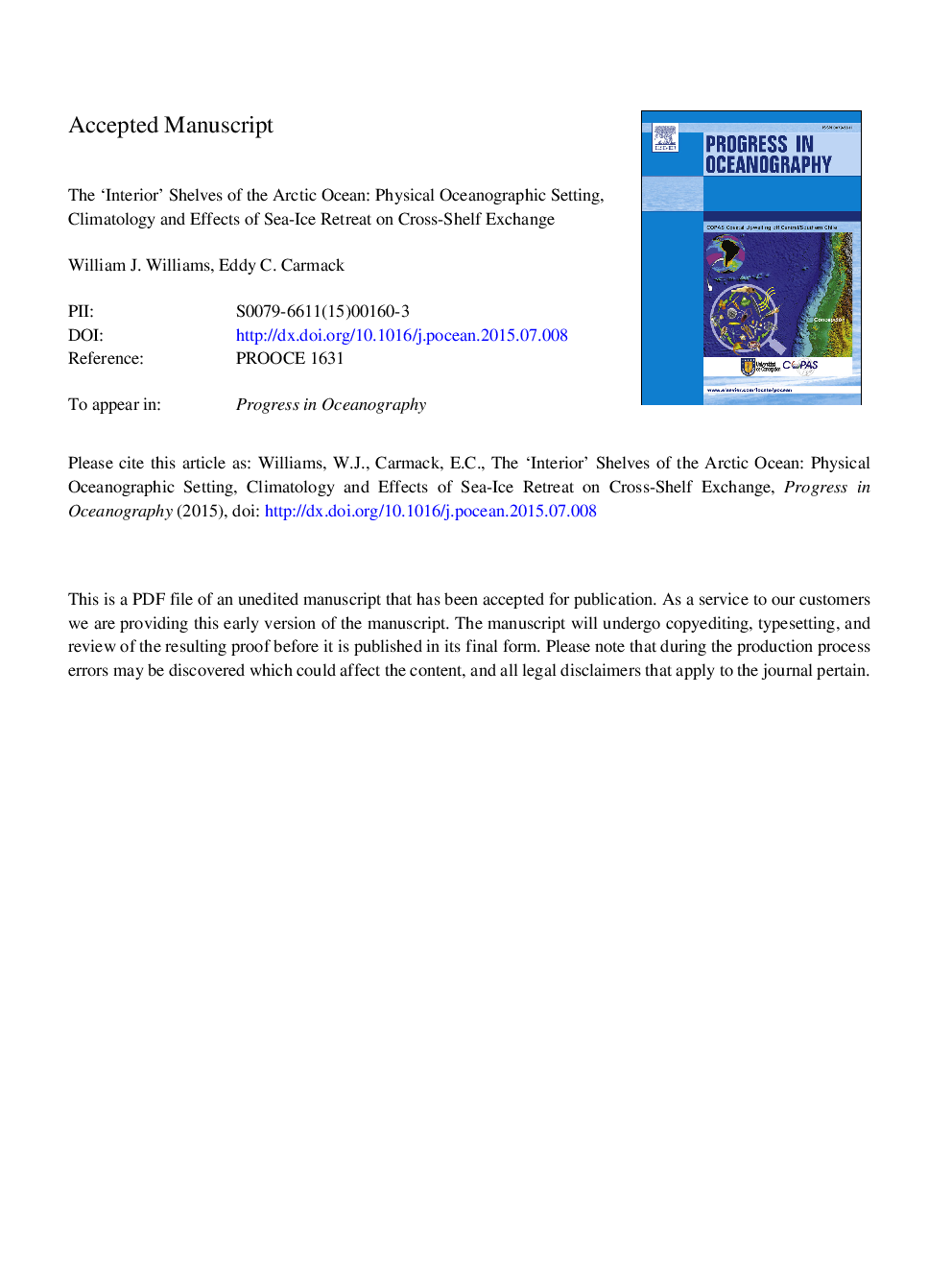| Article ID | Journal | Published Year | Pages | File Type |
|---|---|---|---|---|
| 6388432 | Progress in Oceanography | 2015 | 58 Pages |
Abstract
The interior shelves of the Arctic Mediterranean are the shelves of the Kara Sea, Laptev Sea, East Siberian Sea and Beaufort Sea. They comprise approximately 40% of the total arctic shelf area (â¼2.5Â ÃÂ 106Â km2) and are distinguished from inflow and outflow shelves by their principal forcing dynamics. Along their southern (continental) boundary the interior shelves are dominated by the major arctic rivers, receiving over 80% of the total freshwater input to the Arctic Ocean. In the mid-shelf region wind and ice motion surface stresses dominate mixing and circulation, resulting in high variability. Along, their northern (seaward) boundary they are forced by upwelling- and downwelling-favourable surface stresses which drive shelf-basin exchanges with Atlantic- and Pacific-origin cyclonic boundary currents over the upper slope. Shelf-basin exchange is further modified by shelf-break morphometry (e.g. canyons, valleys, headlands and bottom slope). Here we review the physical oceanographic settings and forcing of the interior shelves and then focus on shelfbreak exchange and supply of nutrients for new primary production due to upwelling across the shelfbreak. As a proxy for this nutrient supply, we show seasonal and annual time series of along-shelfbreak surface-stress due to wind and ice motion from 1979 to 2011. We apply this analysis to the shallow shelves from the Kara Sea to the Beaufort Sea and comment on recent increases due to atmospheric changes and sea-ice retreat.
Related Topics
Physical Sciences and Engineering
Earth and Planetary Sciences
Geology
Authors
William J. Williams, Eddy C. Carmack,
